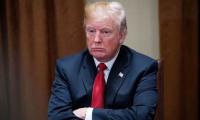France was Germany’s biggest trading partner for more than five decades until 2015. By September 2018, French businesses were investing twice as much in Germany as German companies were in France. They had acquired 93 German companies in 2017, compared to the 25 acquisitions German firms made in France. The French companies show a marked preference for Germany for making machinery and equipment.
The French and German economies are extremely intertwined and complementary. By the end of 2017, some 2,737 French companies were present in Germany, accounting for 30 per cent of those present abroad in the Eurozone. These firms together employ 363,000 people. According to French National Institute for Statistics and Economic Studies, these companies generated an accumulative turnover of 147 billion Euros last year.
Meanwhile, 3,200 German companies currently stand established in France, employing 310,000 people and generating turnover of 141 billion Euros during the same corresponding period. On the cultural front, the Franco-German Youth Office today offers activities and exchanges in all areas related to young people and programmes in which 200,000 of them take part annually. The Franco-German University, which was created in 1997, is made up of a network of French and German higher education establishments. It offers integrated diploma programmes to almost 6, 300 students. On media front, a French-German cultural television channel “ARTE,” provides focus on Europe. The Franco-German Cultural Council, which was created in 1988, is responsible for informing the decisions of the French and German governments on major bilateral and European issues regarding culture. The French cultural, school, scientific and technical cooperation network in Germany is dense and diverse.
Its salient features include: One French Institute of Germany, with 11 satellites in addition to Berlin, five specialized offices in Berlin (books, cinema, theatre and dance, music and fine art), 11 binational structures (Franco-German cultural centres and satellites), one historical research centre (French Institute of History in Germany, in Frankfurt) and one science and technology service, situated in Berlin.
Brief history and timeline of the Franco-German enmity: The Franco-German hostility became more vicious and pronounced when both the nations had fought the six-month long Franco-Prussian War of 1870-71. For the knowledge of readers, the Kingdom of Prussia was a German kingdom that constituted the state of Prussia between 1701 and 1918. It was the catalyst behind the unification of Germany in 1871 and was the leading state of the German Empire until its dissolution in 1918. The capital of Prussia was Berlin. The Germans returned victorious in this Franco-Prussian War of 1870-71 and the Treaty of Frankfurt was inked. The war resulted in the fall of the Second French Empire and inception of the Third French Empire after the French forces invaded Germany. The German forces were superior in numbers and were better trained than their foes. They marched a lot quicker than their French rivals and rapidly invaded northeastern France, resulting in the historic siege of Paris.
Following the Siege of Paris, a revolutionary uprising seized power in the city and held it for two months, until it was bloodily suppressed by the regular French army at the end of May 1871. While 44,700 German soldiers had lost lives in this battle, not fewer than 138,871 French troops were killed too.
French Emperor Napoleon III was held captive by the Germans. He was nephew and heir of Napoleon I and was the first French elected head of state to hold the title of President. Napoleon III then went into exile in England, where he died in 1873. Consequently, the paintings that emphasized the humiliation of the French defeat came in huge demand. Overall, a total of seven wars were fought between France and Prussia/Germany from 1701 to 1871. The bitterness between the two warring nations had continued in World War I and World War II too, making it nine wars actually. The European Union Centre in Singapore had noted in 2013 that it would only be meaningful to speak of the beginning of Franco-German rivalry in the modern age of nationalism after the Napoleonic wars, which ended in 1815.
Then, during the World War I, France avenged its 1870 defeat and regained some of its lost territories under the German control, despite the fact that the French forces had suffered the highest number of casualties proportionate to their country’s population. A lot of French infrastructure and industry was also destroyed in this four-year long war. The French-dominated International Olympics Committee had banned Germany from the Olympic Games of 1920 and 1924, which spoke volumes of the French desire to isolate Germany. Germany soon recovered economically under Adolf Hitler in the 1930’s, while France was tired and politically divided.
During the “Phoney War,” which was an eight-month period at the start of World War II, the French troops (along with their British allies) invaded Germany in 1939 in response to Hitler’s attacks on Poland, Austria and Czechoslovakia. Germany captured the raw materials and labour of its occupied territories and millions of Jews—in particular—were imprisoned and murdered in concentration camps. During the Holocaust or genocide during World War II, Hitler’s Nazi forces had systematically murdered some six million Jews across Europe or around two-thirds of the Jewish population of Europe between 1941 and 1945.
(References: Daniel Becker’s book “Black horror and the White race,” noted historian Karine Varley’s book “The taboos of defeat: The unmentionable memories of the Franco-Prussian War in France, 1870–1914” and the Encyclopedia Britannica)
In 1940, the French Army crumbled within weeks, and with Britain retreating, an atmosphere of humiliation and defeat swept France. Germans were triumphant as they occupied most of France. France was conquered by Germany in only one month and 12 days. The Germans then invaded Soviet Union in 1941 and Joseph Stalin began pressing his new allies from Moscow for the creation of a second front in Western Europe. And by early 1941, Germany was controlling much of Europe. In November 1943, the-then American President, Franklin Delano Roosevelt, and British Premier, Winston Churchill, had promised Stalin that they would open the long-delayed second front in May 1944. So, after France and its allies had launched an offensive in June 1944, Germany was conquered by the Soviet Union by May 1945. Combat losses throughout the war meant that the Germans no longer had a pool of able young men from which to draw.
The German soldiers were now on average six years older than their Allied counterparts. Hitler’s forces were mainly provided with unreliable captured equipment and lacked motorized transport. The defeat of Germany during World War II led to the French occupation of parts of western Germany, and Berlin in East Germany. In the 1950s, the French and West Germans launched a new period of Franco-German cooperation, which ultimately led to the formation of the European Union. The “1950 Schuman Declaration,” which led to the creation of the European Union’s predecessor, the European Coal and Steel Community, had sought to render the prospect of war between France and Germany ‘not only unthinkable but materially impossible.’ In 1963, the “Elysee Treaty” of friendship was signed by French President Charles de Gaulle and German Chancellor Konrad in Paris.
With the signing of this treaty, Germany and France established a new foundation for relations that ended centuries of rivalry. On January 22, 2013, French President Francois Hollande and German Chancellor Angela Merkel had gathered in Berlin to celebrate the 50th anniversary of the signing of the “Elysee Treaty.” In August 2014, the-then French President Francois Hollande and his German counterpart, President Joachim Gauck, had together marked the centenary of Germany’s declaration of war on France by laying the first stone of a memorial for French and German soldiers killed in World War I.
(References: Eminent German media house “Spiegel Online” and France 24, a French state-owned international news and current affairs television network based in Paris)
Since then, France and Germany (West Germany between 1949 and 1990) have cooperated in the running of the European Union and have shared ideas pertaining to foreign-policy matters. For example, they had jointly opposed the American invasion of Iraq in 2003. The cooperation between the two countries is immense and intimate. They are sometimes described as the “twin engine” or “core countries” pushing for moves. The March 2013 European Union Centre in Singapore’s report titled: “The 50 years of the ‘twin engine,’ Franco-German reconciliation, European integration and reflections for Asia,” had stated: “Amid the pomp, the current difficulties between the two leaders and their countries were momentarily forgotten – the differing strategies between the socialist Hollande and the pro-austerity Merkel in solving the euro zone debt crises, and France’s unilateral action in Mali, which put Germany in a bind with regard to its own military contribution.”
The report had noted: “Over 60 years later, the EU was awarded the Nobel Peace Prize for the ‘advancement of peace and reconciliation, democracy and human rights in Europe’, and the Norwegian Nobel Committee noted that the war between Germany and France was unthinkable indeed.” The European Union Centre in Singapore’s report had maintained: “It is all too easy to forget the importance of Franco- German reconciliation. The common charge is that those generations of French and German citizens born after World War II take the peace between their countries for granted.” Imran Khan could have cited a few more examples where estranged countries are doing a lot of business despite often pointing guns and arrows at each other. For example, the current two-way trade volume between the United States and China rests at around $635 billion, the Russia-United States bilateral trade quantum stands at $21 billion at present, the total Indo-China business stands at $ 73 billion, the trade volume between China and Japan was $23.36 billion in 2017, Denmark and Sweden have fought 11 bloody wars between 1521 and 1814 and are great friends today, and then the United Kingdom and France have nourished enmity for almost 950 years since September 1066, but have kept economy separate from politics.
DEO briefed the participants on the ongoing drive for the enrollment of children
Air ambulance would be deployed for emergency transfer of patient: says Sarfraz Bugti
Senator Palwasha Khan criticized the behavior of the SIC during the president’s address to the Parliament asserting...
Chief Justice Aamer Farooq heard the petition filed by the former president IHC Bar Council Nayab Gardezi through his...







